At three Beth Levin fell in love with her first piano, an old Lester upright in the basement. She would go down for hours and create a little world for herself. Made her debut with the Philadelphia Orchestra at age 12, and performed with them again at 16. (Her teacher was the great Chopin interpreter, Maryan Filar.) On her first day as a pupil of Rudolf Serkin at the Curtis Institute, she roamed the halls of practice rooms wondering how anyone could practice for six hours. Her best moments have been as soloist with orchestras in Boston, New York, Philadelphia and Seattle, touring in Music From Marlboro and with chamber groups she has founded, most recently the American Arts Trio. She writes: “I live with my family in Brooklyn. I very much wanted children and was eager for the challenge of balancing a musical life with a home life. One of my favorite tasks is to pop a lasagna into the oven while doing some intense practicing, thereby fulfilling two roles at once — mother and musician.”
Beth Levin
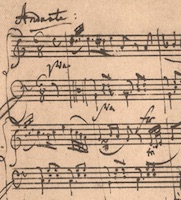
Mozart’s Rondo in A minor, K.V. 511
A melancholy dance of childlike hearts, delicate steps that shimmer even as they brood — to ask an eternal question, then listen as Mozart answers in cascades of pearls.

Mozart’s Rondo in A minor, K.V. 511
A melancholy dance of childlike hearts, delicate steps that shimmer even as they brood — to ask an eternal question, then listen as Mozart answers in cascades of pearls.

Beethoven’s Choral Fantasy and I
In December of 1808, Beethoven led an amateur group in the premiere of his Choral Fantasy for piano, chorus, and orchestra, Op. 80. They say he improvised the Introduction in performance and only later wrote it down.

Beethoven’s Choral Fantasy and I
In December of 1808, Beethoven led an amateur group in the premiere of his Choral Fantasy for piano, chorus, and orchestra, Op. 80. They say he improvised the Introduction in performance and only later wrote it down.
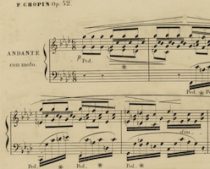
A Brief Look at Chopin’s Ballade in F minor, Op. 52
The Ballade comes in on a cloud, builds to a lightning storm keeping its center — the power of ppa melody spoken once, again, a third time, renewing truth with three tolls of a bell.

A Brief Look at Chopin’s Ballade in F minor, Op. 52
The Ballade comes in on a cloud, builds to a lightning storm keeping its center — the power of ppa melody spoken once, again, a third time, renewing truth with three tolls of a bell.

A View From the Green Room
“A mirror ringed in G.E. bulbs —
hopped up, I shimmy into
black velvet.”

A View From the Green Room
“A mirror ringed in G.E. bulbs —
hopped up, I shimmy into
black velvet.”

Tea and Alchemy
One very good and convenient thing about performing a modern composer’s music is one’s ability to kvetch directly to the source.

Tea and Alchemy
One very good and convenient thing about performing a modern composer’s music is one’s ability to kvetch directly to the source.

An Intercepted Letter from Beth Levin
This past year I followed my freelance impulses, performing with a soprano in Edinburgh, with a mezzo in New York, and generally saying yes to everything put in my path.

An Intercepted Letter from Beth Levin
This past year I followed my freelance impulses, performing with a soprano in Edinburgh, with a mezzo in New York, and generally saying yes to everything put in my path.
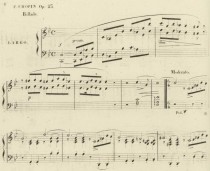
Chopin’s G minor Ballade, Op. 23
A noble C climbs four octaves in A flat and touches a high C (C6) before descending by graceful turns into G minor, the true key of the Ballade.

Chopin’s G minor Ballade, Op. 23
A noble C climbs four octaves in A flat and touches a high C (C6) before descending by graceful turns into G minor, the true key of the Ballade.

A Log for End of Summer
After the Fringe Festival in August I barely touched the piano.

A Log for End of Summer
After the Fringe Festival in August I barely touched the piano.
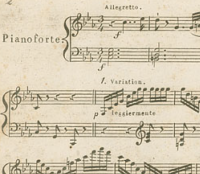
A Look at Beethoven’s 32 Variations in C Minor (Part II)
Sweetness gives way to untamed power. Harmony, not melody, is the focus, presented in driving scales.

A Look at Beethoven’s 32 Variations in C Minor (Part II)
Sweetness gives way to untamed power. Harmony, not melody, is the focus, presented in driving scales.

A Look at Beethoven’s 32 Variations in C Minor (Part I)
The eight-measure theme is in 3/4 time, strong in meter, in spine, in sound — chords and melody walk chromatically away from C minor, reach a climactic sforzando on IV (F minor), then quickly run home again.

A Look at Beethoven’s 32 Variations in C Minor (Part I)
The eight-measure theme is in 3/4 time, strong in meter, in spine, in sound — chords and melody walk chromatically away from C minor, reach a climactic sforzando on IV (F minor), then quickly run home again.
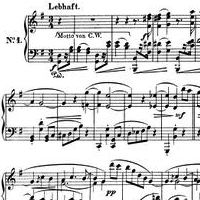
On Schumann’s Davidsbündlertänze (II)
Book II begins with a powerful dance in D-minor.

On Schumann’s Davidsbündlertänze (II)
Book II begins with a powerful dance in D-minor.
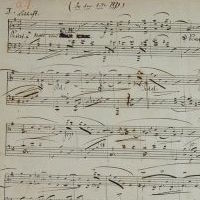
On Schumann’s Davidsbündlertänze (I)
Perhaps only a fool would try to describe Robert Schumann’s Davidsbündlertänze.

On Schumann’s Davidsbündlertänze (I)
Perhaps only a fool would try to describe Robert Schumann’s Davidsbündlertänze.